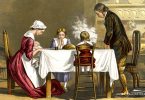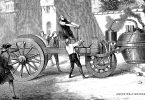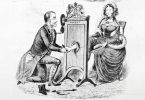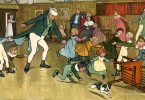It may seem hard to believe, but the 1920s were a century ago now—at least the beginning of that infamous decade was, and it was a momentous period in time for your ancestors. Since so many of us knew people who were born—or were even grown and with families of their own—in the 1920s (and may still know them if they are very elderly right now—this is the decade that most of the 1920s babies are in their 90s), it may not seem like it was that long ago.
But, as we know from history, a lot can happen in a century, and the way people in a society live can change in dramatic fashion. As we enter the 2020s, it is well worth taking a look back at what our ancestors were doing in the 1920s. This helps us, as genealogists, to better understand their lives, and to feel closer to them. This type of understanding is important genealogical work—just as important as knowing the names, dates, and places.
The 1920s Were Called “The Roaring Twenties”
This nickname was not for nothing, either, Society was on a decadent roll in the 1920s. You must remember, the infamous stock market crash that kicked off the Great Depression did not happen until near the end of the decade, in late 1929. Most of the 1920s were amazing and economic prosperity was the name of the game.
Because of the “roaring” economy, people had cash to spend. There was a lot of discretionary income in most households in the United States in the 1920s. Of course, every household was different, but for most, the middle class was thriving, and the upper class was living like royalty. The average American actually had extra money to buy luxuries to make their lives easier and happier, like cars, new electric appliances, family vacations, indoor plumbing, and more. This was the first time in American history that this was true.
Women’s Rights Were Front and Center
The 1920s were truly the first decade in American history where women’s rights were being talked about in more than just family kitchens and ladies’ living rooms. It was in the news. The 19th Amendment was passed in 1920, which granted women the Constitutional right to vote in any election in the country. While some states allowed this prior to that, the amendment guaranteed it for every American woman.
Women were venturing out of their homes and into the workplace for the first time in this decade, too. They were feeling more independent, sometimes living on their own with a job before they got married. This sense of independence also changed the fashion sense. The “flapper” movement produced a lot of iconic fashions, such as the hair bob, short dresses, high heels, and feathered headbands.
Jazz, Prohibition, the Speakeasy, and TV
Other important cultural inventions of the 1920s changed the landscape of American culture forever. Jazz was invented during this decade (and frowned upon by the older generations, who viewed it as a sinful decadence—much like the children of the 1920s viewed rock ‘n roll when their children invented it). Prohibition was the law in the 1920s, which saw the rise of the speakeasy, where those in the know could go, order an illegal drink, and socialize with their friends to some of that evil jazz. Also, TV was invented in the 1920s. The American (and world) landscape was never the same after that.






